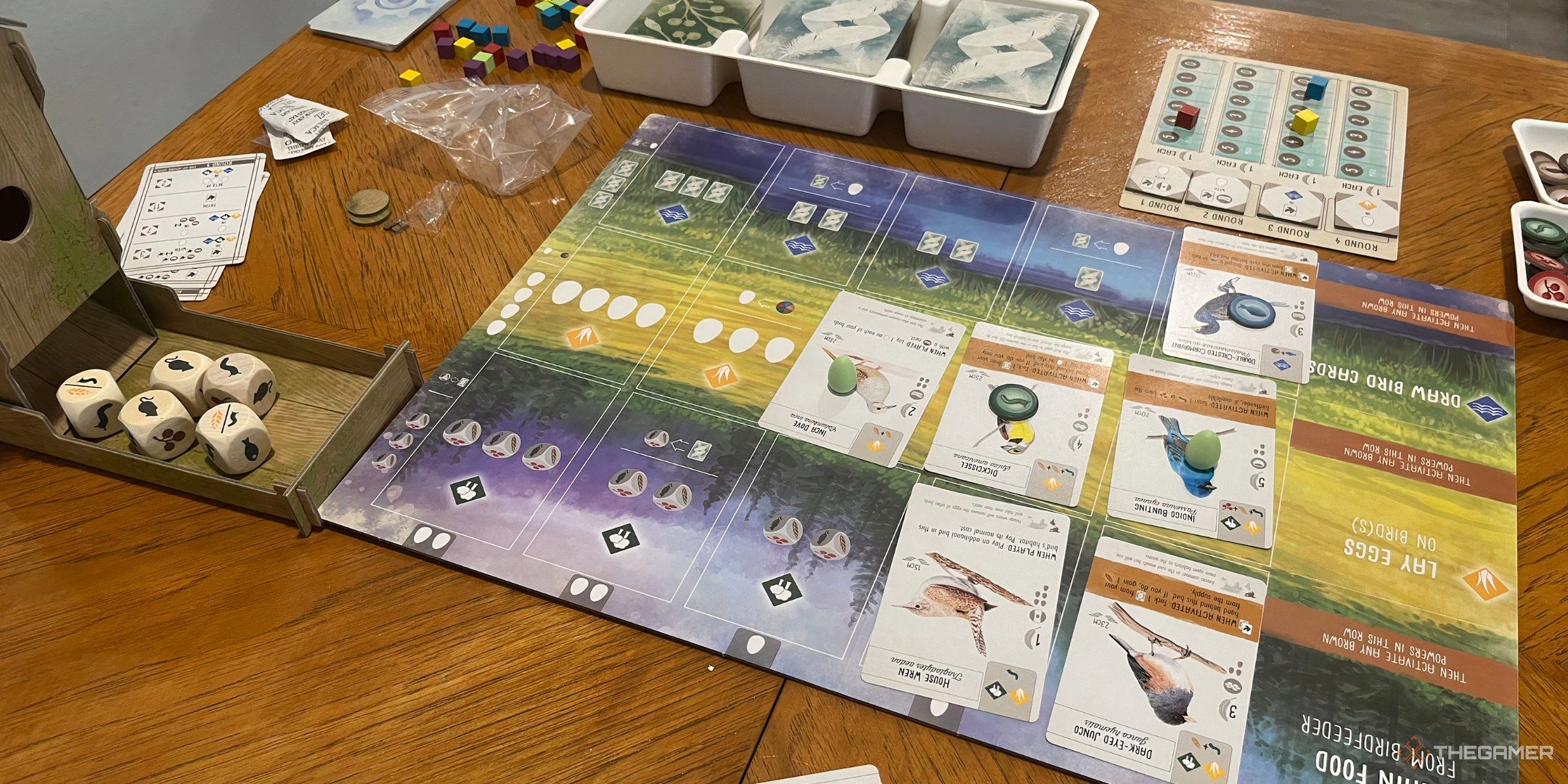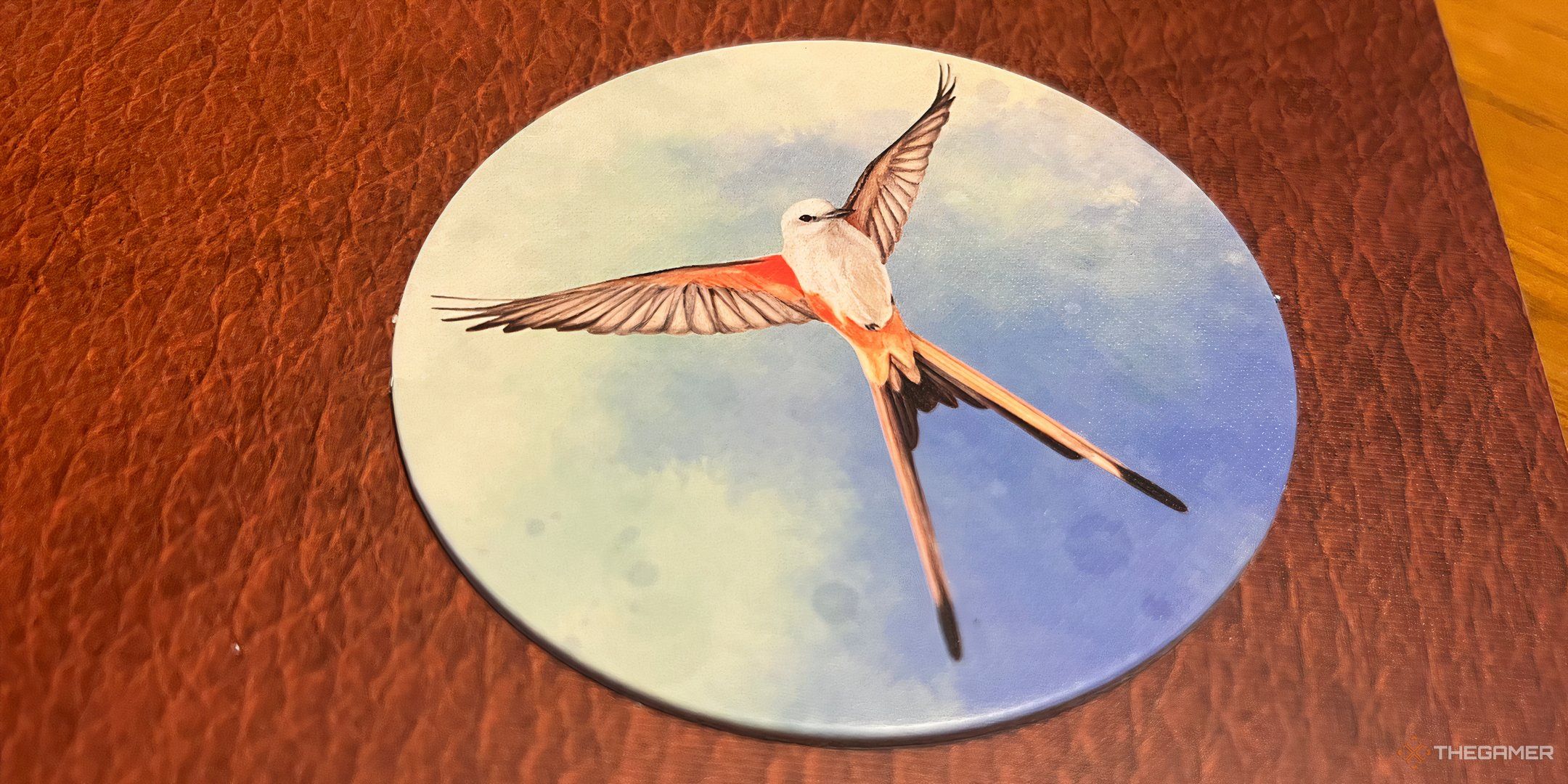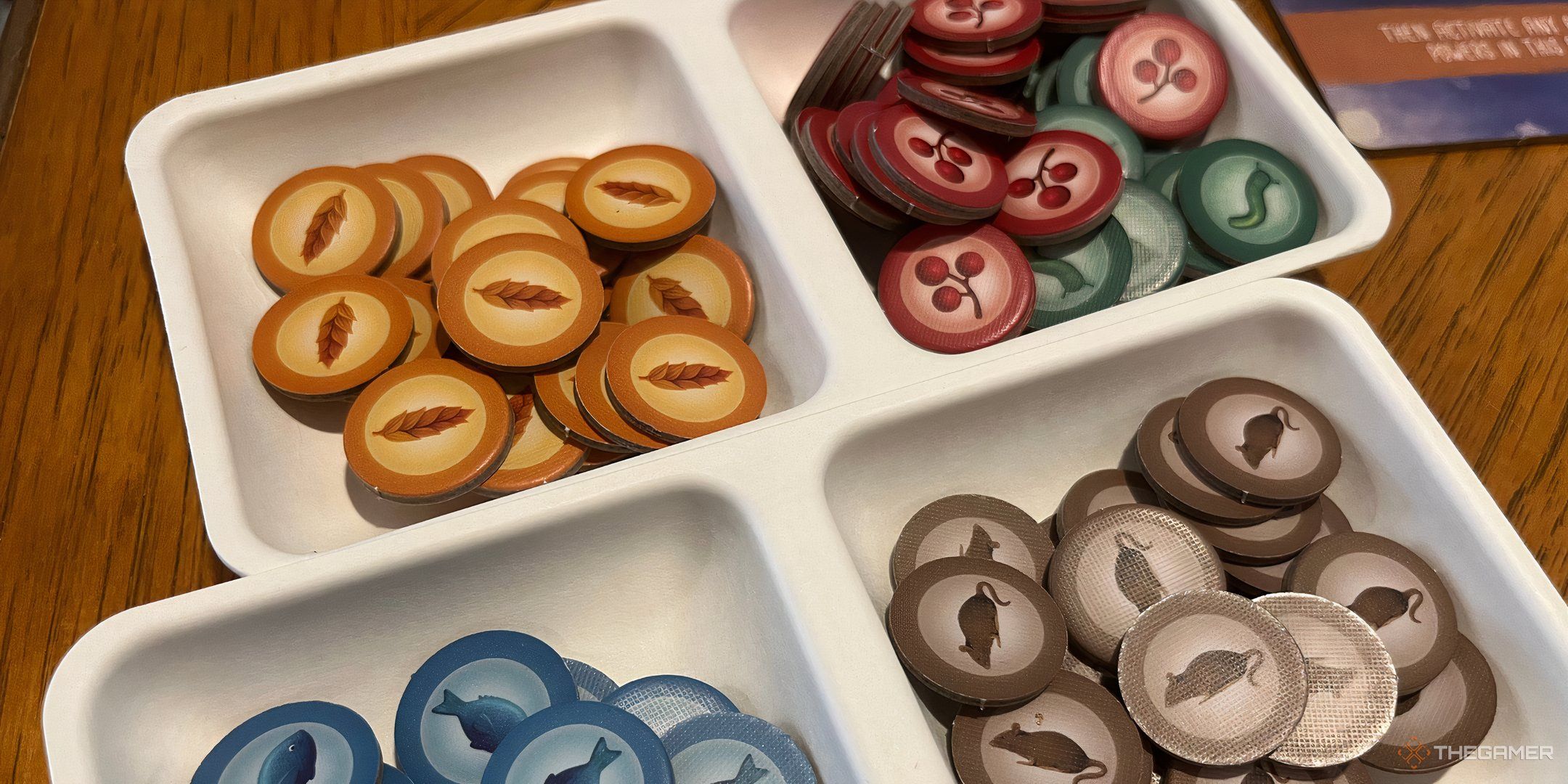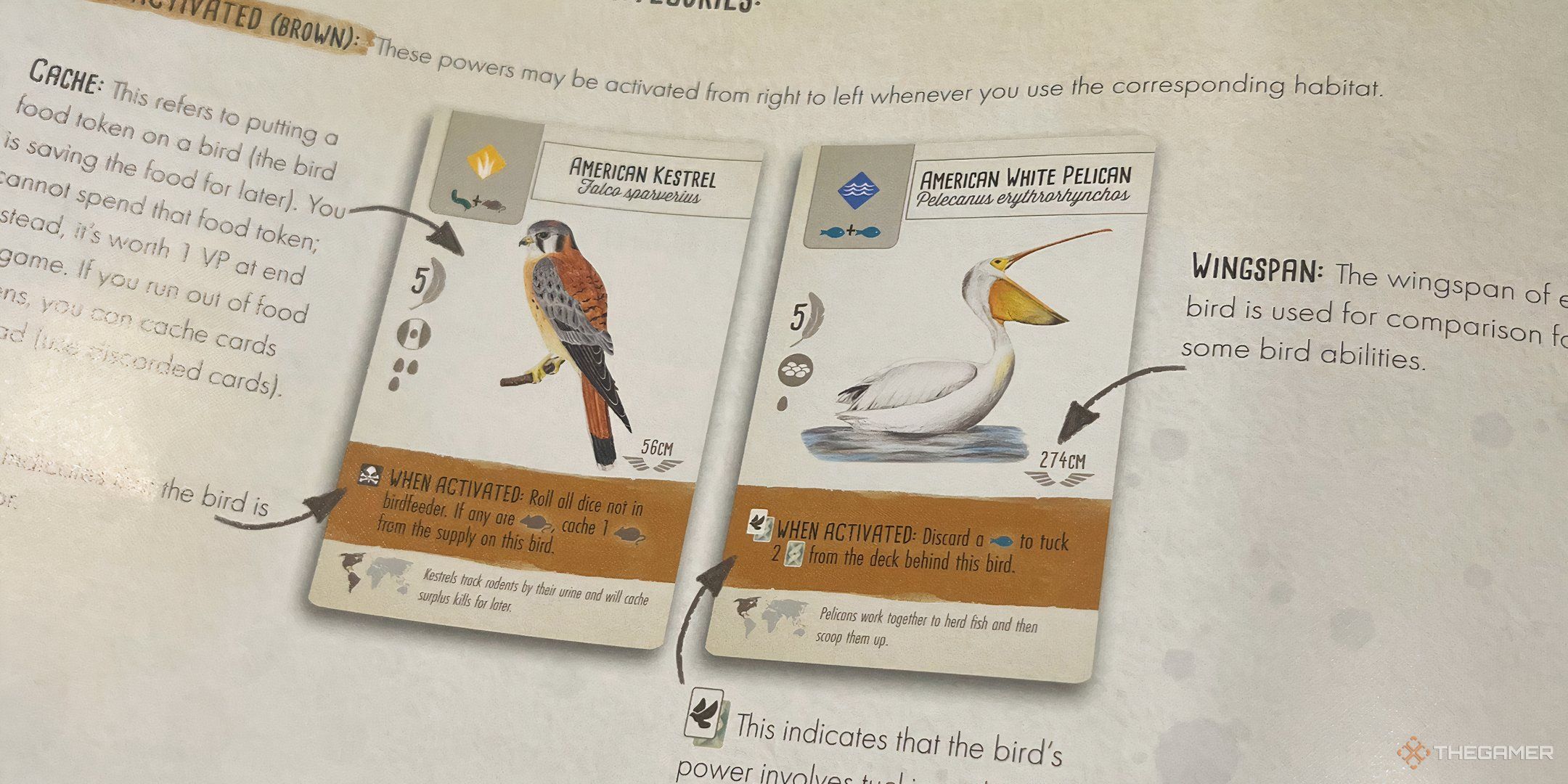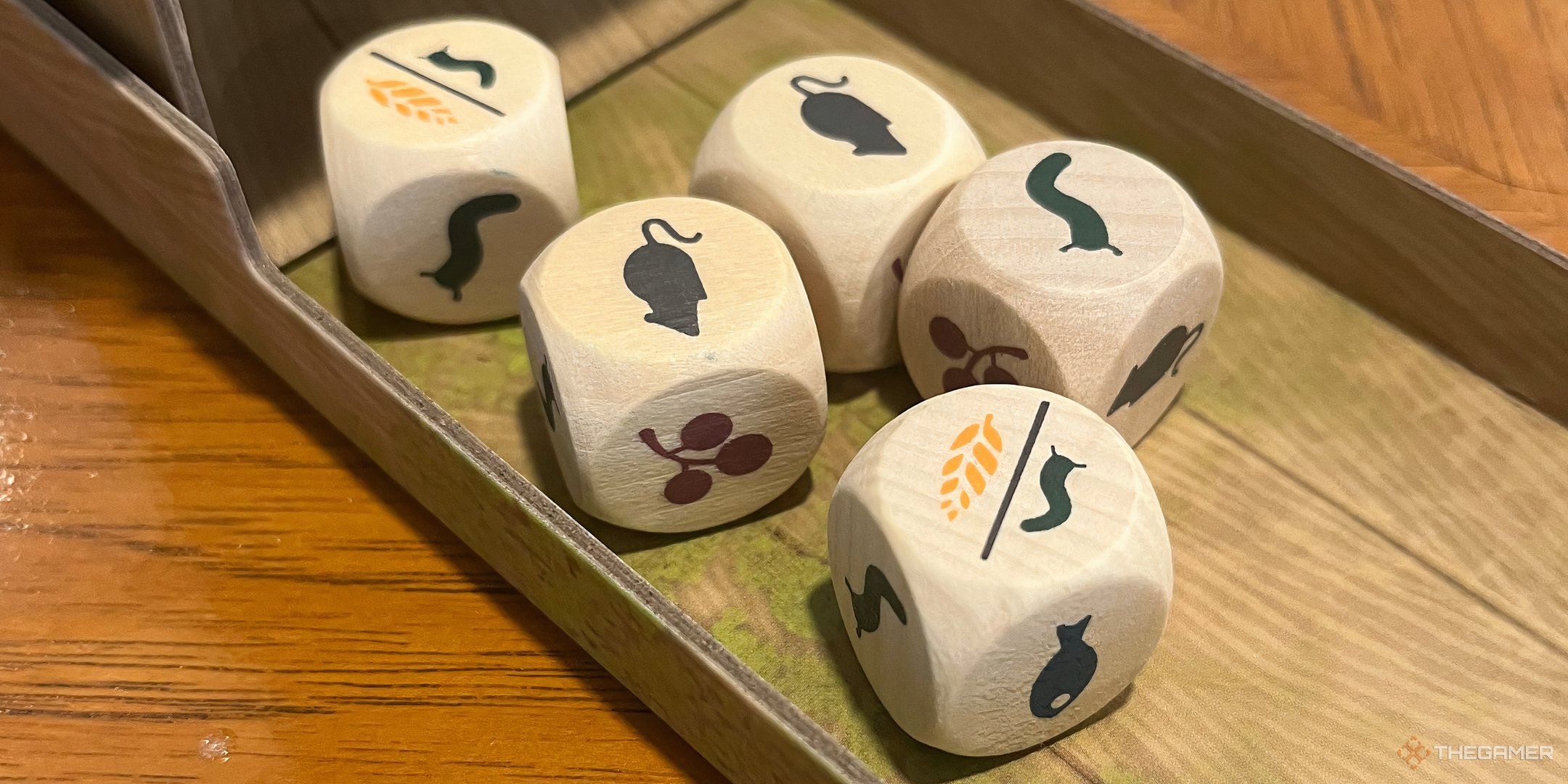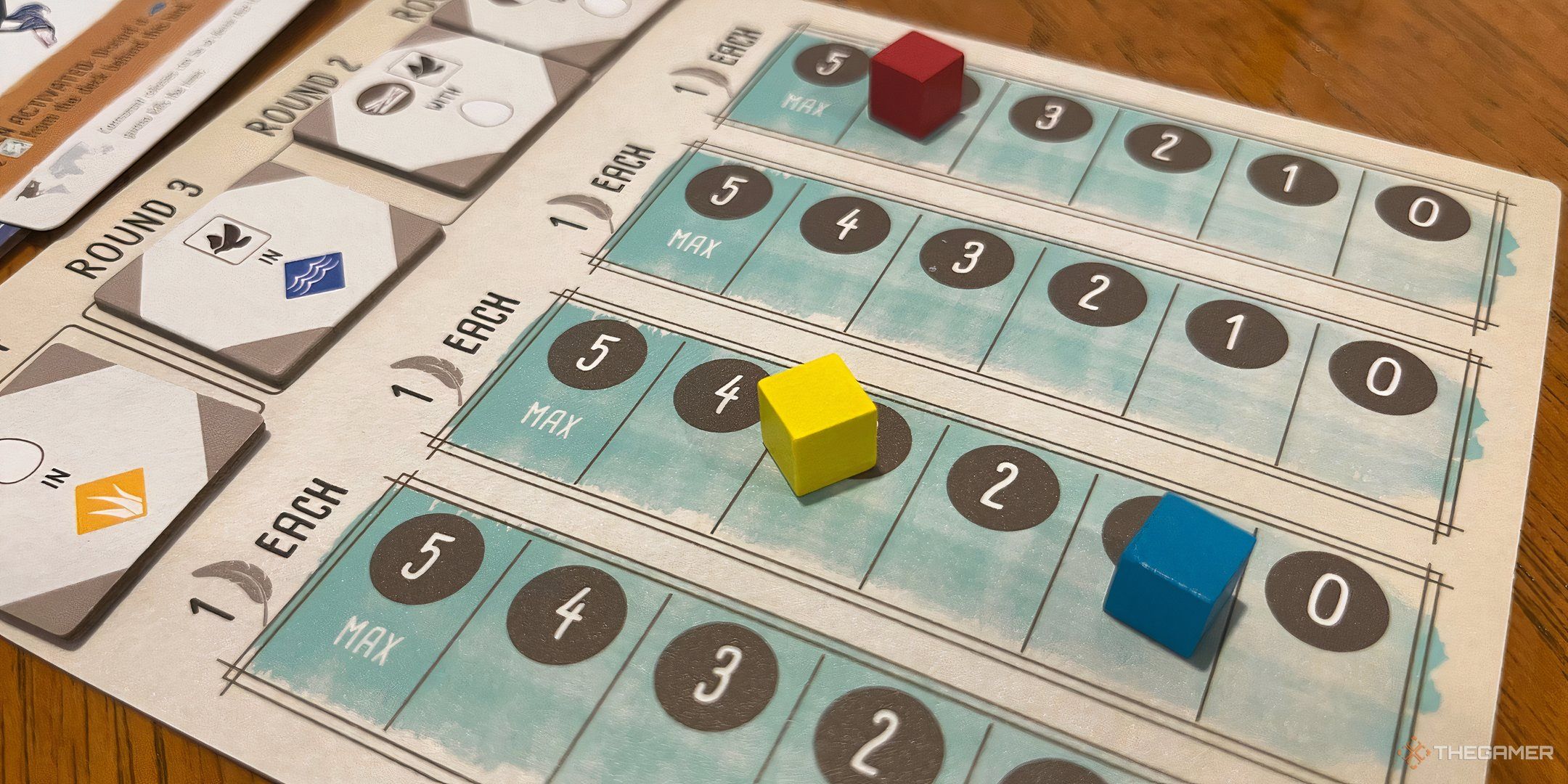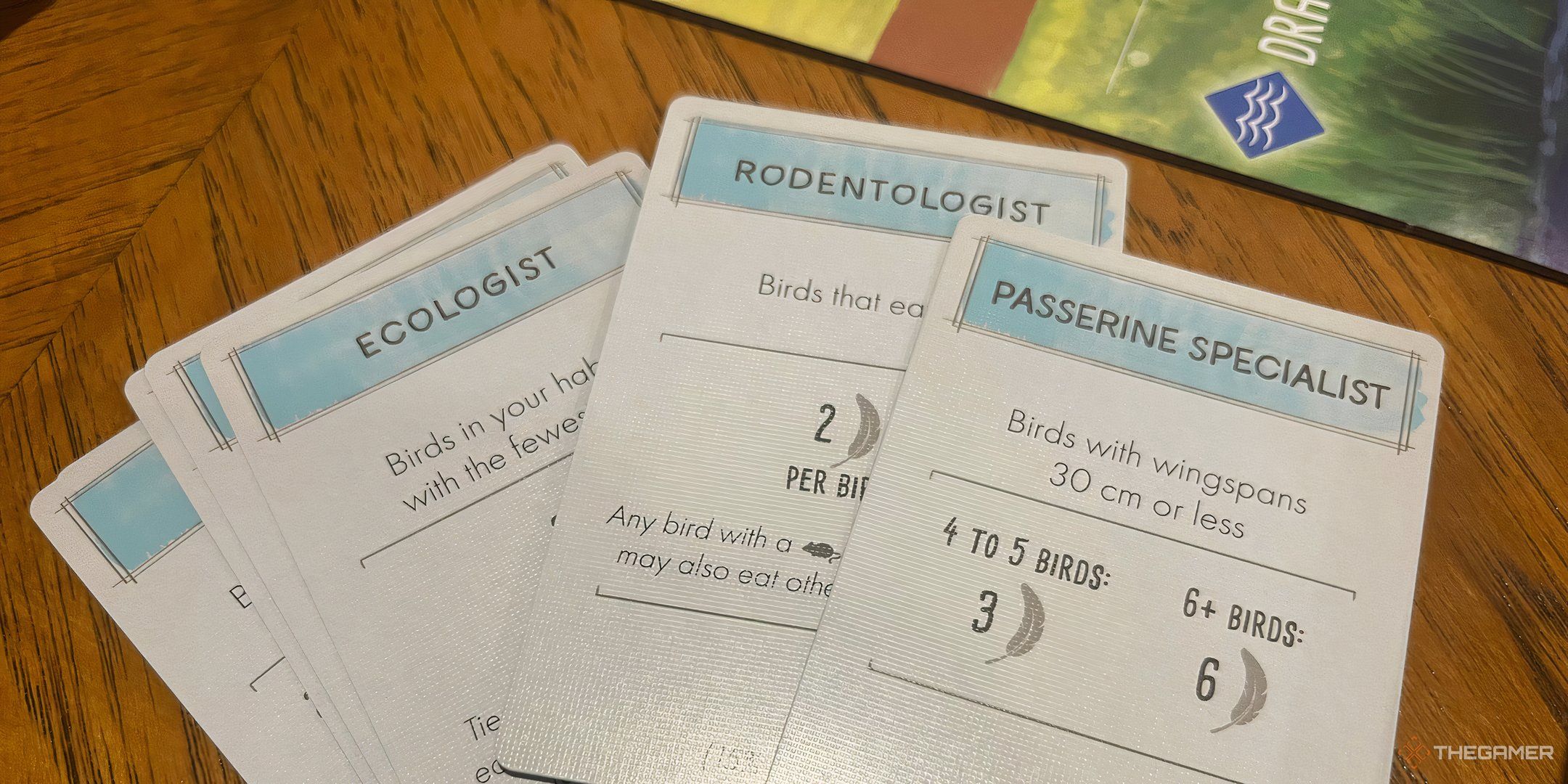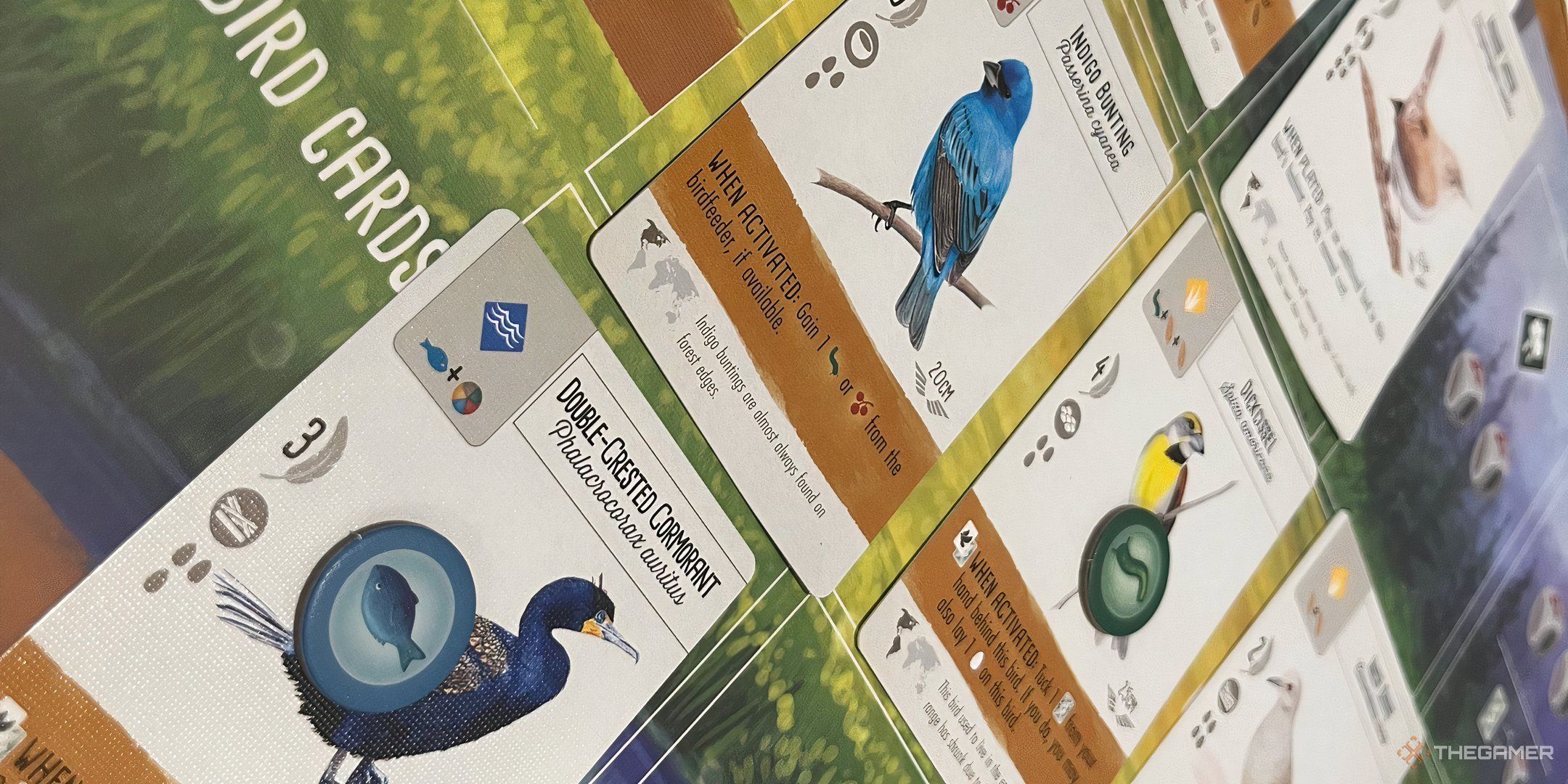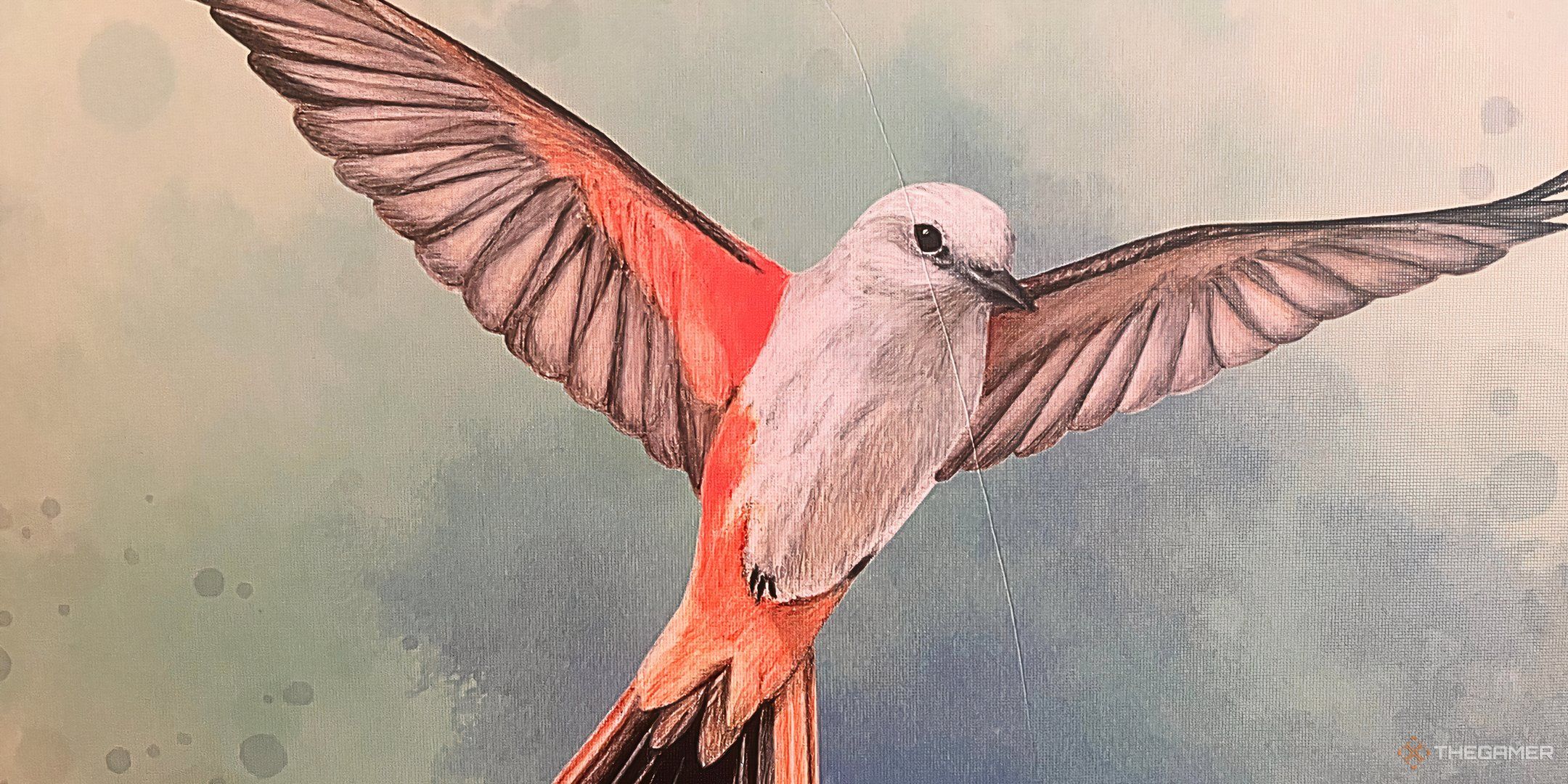Wingspan is a board game that asks players to take on the roles of bird enthusiasts who are on a mission to attract the best birds to your wildlife sanctuary. Throughout the game, you’ll collect different birds from a unique deck of 170 cards, and place them in your aviary to earn food and eggs, eventually earning victory points.

Related
Best Cozy Board Games In 2024
These board games are slow paced and perfect for unwinding.
But, if you’re diving into Wingspan for the very first time, it’s easy for the task to feel daunting. Between so many different cards and resources, there’s a lot to take in. That’s why we’ve created this comprehensive guide that has everything you need to know to play Wingspan.
How To Set Up Wingspan
Wingspan can be played with one to five players and is relatively easy to set up (though rules differ for a one-player game; more on that later).
Simply follow the steps below to set up a game of Wingspan:
- Shuffle Cards – Shuffle the bird cards into a deck and place the deck next to the three-slotted bird tray; place three bird cards face up into the tray. Shuffle the bonus card deck as well and place it next to the tray.
- Establish Supply – Separate eggs and food tokens and create piles for each in reach of all players.
- Build Bird Feeder – Construct the Bird Feeder, which serves as the game’s dice tower; place food dice inside.
- Hand Out Mats – Hand out player mats and reference cards to players.
- Place Goal Tiles – Place the goal board and four random goal tiles in the corresponding slots in view of all players.
- Hand Out Cards – Hand out five bird cards, two bonus cards, and one of each food token to each player.
In the instruction manual for Wingspan, there is also a Swift-Start Guide option that allows you to hand out cards and guides to players immediately and lets you learn as you play.
Once you have handed out five bird cards, two bonus cards, and one of each food token to each player, players may keep as many bird cards as they want. However, for each bird card a player keeps, they must sacrifice one bird token.
Additionally, players may keep one of their bonus cards, but not both.
Bonus Cards offer you more opportunities to earn Victory Points, and will dictate your overall strategy for collecting birds, eggs, food tokens, and more.
Once this is done, you can begin playing!
How To Win Wingspan
To win Wingspan, you must earn Victory Points by achieving as many of the following goals as possible:
- Add Birds To Your Sanctuary
- Lay Eggs
- Cache Food
- Grow Birds’ Flocks
- Achieve Round-End Goals
- Achieve Bonus Card Goals
All of the above goals earn you various points, which are calculated at the very end of the game, awarding players Victory Points. Whoever has the most Victory Points wins the game. There are many ways to do the above, which will be detailed below.
In the event of a points tie, whoever has the most food tokens left next to their mat wins. In the event that players are still tied, they share the victory.
How Rounds Work
Wingspan is played over the course of four rounds, in which players take a certain number of turns each. These turns are represented by their action cubes. At the start of each game, each player has eight action cubes, and therefore, eight turns.
Action Cubes may seem trivial, but they are important for scoring and for helping to track how many turns are left in a round.
After each round, players will lose one action cube (more on that in a bit), and therefore, have one less action each round. On each turn, you may use one action cube to make one of four different actions.
|
Action |
Details |
|---|---|
|
Play A Bird |
You may place a bird from your hand in the leftmost available slot in any row in your player mat, given that the bird matches the chosen habitat, and you have enough food and eggs to match the bird’s food and egg cost. Once you do so, place an action cube at the top of the column in which you have played that bird. |
|
Gain Food |
Place an action cube in the leftmost slot available in the Gain Food row in your player mat, and take food tokens from the supply based on the dice available for you to take in the Bird Feeder. |
|
Lay Eggs |
Place an action cube in the leftmost slot available in the Lay Eggs row on your player mat, and lay that number of eggs. |
|
Draw Bird Cards |
Place an action cube in the leftmost slot available in the Draw Cards row in your player mat, and draw that number of bird cards. |
You may take any of these actions once per turn. However, there is no limit to how many times you can take a given action in a round. It all depends on your strategy. We’ll detail all of these actions more below.
Additionally, after you either gain food, lay eggs, or draw bird cards, you may activate the powers of any bird in the corresponding row if the card says you may, should you wish to (these powers are always optional).
Some bird cards have powers that say you may activate them once between turns. If this is the case, you only use this power once on another player’s turn.
Again, if you’re having trouble interpreting any rules on cards, refer to Wingspan’s Appendix for more information.
Play A Bird
When you take this action, place your action cube in the column for which you will play the bird. Each bird card you play has a food cost detailed in the upper left-hand corner. If you cannot pay that cost, you cannot play that bird that round.
Some birds’ food costs might have a Wild symbol or a slash or plus sign. If you’re having trouble reading food costs, refer to the Appendix instructions in your game for more specific details.
Additionally, at the top of each column, you may see an egg icon. This represents egg cost, and you must also pay that egg cost to play a bird card in that chosen slot.
Any two food tokens of the same type can count as one of another if you’re short on the correct food tokens needed.
You must also make sure you’re placing your bird card in the correct habitat. Overall, there are three habitats.
Some birds can be placed in multiple habitats; however, no more than five birds can be placed in any one habitat.
Gain Food
When you take this action, place an action cube in the leftmost slot available in the Gain Food row. For each food die in that slot, you may take one food die from the Bird Feeder, taking the corresponding food token shown on the die’s face.
Additionally, if the slot where you placed your action cube shows a card-to-food die ratio, you may make that exchange as well.
Once you have done this, you may now activate any bird powers available to you based on the birds in the Gain Food/Forest row. Remember, these are always optional.
If all food dice have been taken from the Bird Feeder by other players, throw all dice back into the tower.
Additionally, if the dice in the tray all show the same food icon (including if there’s only one die), you may throw all five dice back into the tower.
Lay Eggs
Similarly to the Gain Food action, when you take this action, you must place an action cube in the leftmost slot available in the Lay Eggs row. For each egg in that slot, you may lay an egg and place these in any color combination on any available bird cards.
Each bird card has an egg limit, represented by the number of eggs on the leftmost side of the card.
If you lay more eggs than you have nest space available, you forfeit the extra eggs; you cannot store eggs elsewhere.
Additionally, each bird card has a nest type on it. These are important for scoring end-of-round goals and bonus cards, so keep an eye out for these.
Just as before, you can also activate any bird card powers in the Lay Eggs row, given that the cards allow for this. If the slot your action cube is in has a Wild symbol in it, you may also exchange any food token for an additional egg.
Draw Bird Cards
Lastly, when you take this action, you must place an action cube in the leftmost slot available in the Draw Bird Cards row. Draw an equal number of cards from either the Bird Tray or the Bird Deck as shown in this slot.
Additionally, if the available slot offers an egg-to-card ratio, you may make that exchange for an additional card.
Lastly, as before, you may then activate any bird card powers you have in the Draw Bird Cards row.
Many bird card powers allow you to either cache a food token on a bird card (with a limit of one, typically) or tuck a card behind another bird, representing that bird’s flock. These earn you points at the end of the game.
How Bird Powers Work
Throughout the game, you may also activate any bird card powers you have available. Bird powers can be activated in one of three ways.
- When Played – When you play a bird card with this bird power, you may immediately use the power.
- When Activated – When you finish a turn, you may activate any bird card powers in the corresponding row.
- Once Between Turns – Once between your turns, you may activate the bird card power.
The Wingspan Appendix has a breakdown of every single bird power available for reference.

Related
The Best Board Games For Solo Players In 2024
You wouldn’t think it, but a board game just for you can be just as fun as one you play with friends.
End Of The Round
Once every player has used every action cube they have available, the round ends, and afterward, players must take a handful of steps before proceeding to the next round.
- Remove All Action Cubes From Player Mat
- Score End-Of-Round Goal
- Discard All Face-Up Bird Cards On Bird Tray
You will score the end-of-round goal by placing one action cube on the goal board.
The goal board has two sides to it, one that is more competitive and ranks players on a first, second, and third basis, and one that is less competitive, and simply has numbers one to five listed next to each goal.
Depending on what the end-of-round goal was, place your cube on either the first, second, or third place square depending on your ranking among other players if you’re using the green side.
Alternatively, if you’re using the blue side, place your action cube on the number representing the number of times you completed the goal.
In the event of a tie between players on the ranked side of the goal board, place both cubes in the same slot, do not place any players’ action cubes in the following slot, and add the points for that place and the next place divided by the number of players who tied and round down.
How To Calculate Final Scores
Once you have done the above, you play the following round as normal, with one less action cube, which has now been placed on the goal board. Play the following three rounds as normal, after which, the game ends.
From there, you will score the game based on the criteria listed in the ‘How To Win’ section above. Whoever has the most Victory Points at the end of four rounds, wins!
|
Victory Criteria |
Victory Points |
|---|---|
|
Birds |
Amount on cards |
|
Bonus Cards |
Amount on cards |
|
End-Of-Round Goals |
Amount on goal board |
|
Eggs |
1 |
|
Food On Cards |
1 |
|
Tucked Cards |
1 |
Tips And Tricks To Win Wingspan
Now that you have an understanding of the basic gameplay of Wingspan, you might be wondering what the best strategies are to win the game.
Strategies are varied and complex, and largely depend on a few things:
- Bonus Cards
- Bird Cards In Your Hand
- End-Of-Round Goals
Generally speaking, it’s always a net positive to collect as many eggs, food tokens, and bird cards as you can, as these always earn you Victory Points.
Each time you play Wingspan, you’ll want to tailor your strategy based on the Bonus Cards you get and which End-of-Round Goals are available for you to pursue.
For example, if, in round four, let’s say you see that the end-of-round goal is to count the number of eggs within a specific nest type and tabulate victory points based on that.
Then, in that case, you’ll want to prioritize getting birds with that nest type and laying as many eggs as you can.
In Wingspan, it’s important to focus on your strategy, but also pay attention to what other players are doing.
If you can tell that another player is focusing on a specific end-of-round goal, it might be worth it to pivot your strategy rather than chase their coattails, especially if they seem unbeatable.
Wingspan is all about synergy, and making decisions that capitalize off one another.
Laying a lot of eggs is helpful for earning points, yes, but using those eggs to achieve an end-of-round goal allows your aviary to work like a positive feedback loop.
Ultimately, there’s no one hard-and-fast strategy for winning Wingspan.
The best thing you can do is remain flexible and create a well-rounded reserve that focuses on many different ways to earn Victory Points. Don’t get too hyper-specific!
Differences Between Versions
Beyond the standard edition, Wingspan has many different off-shoots that are available to play; some versions are similar and some are pretty different. Here’s a breakdown of different versions of the core game, and various spin-offs.
|
Version |
Similarities |
Differences |
|---|---|---|
|
Automa |
|
|
|
Wyrmspan |
|
|
|
Finspan |
|
|

Next
10 Strategies For Winning Azul
Ready to become a master tile-laying artist? Here are some tips and tricks to win your very first game of Azul.

